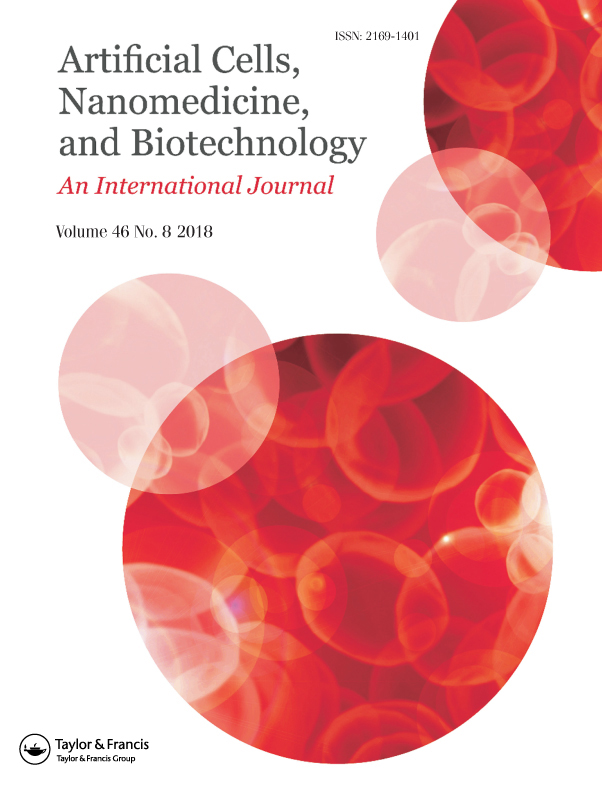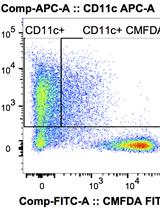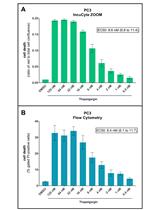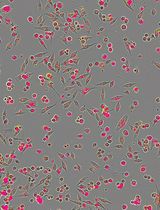- 提交稿件
- 订阅
- CN
- EN - English
- CN - 中文
- EN - English
- CN - 中文
Evaluation of Anticancer activity of Silver Nanoparticles on the A549 Human Lung Carcinoma Cell Lines through Alamar Blue Assay
通过阿尔玛蓝显色法评估A549人肺癌细胞系上的银纳米粒子
发布: 2019年01月05日第9卷第1期 DOI: 10.21769/BioProtoc.3131 浏览次数: 13748
评审: Prashanth N SuravajhalaNagendra KaushikAnonymous reviewer(s)
Abstract
Silver nanoparticles have been widely studied to possess antimicrobial as well as anticancer activity, and have found its applications in various fields including pharmaceutical industry, diagnostics, drug delivery, food industry, and others. For this purpose, several cell proliferation assays are widely used for the evaluation of anticancer activity of synthetic compounds as well as natural plant extracts. In general, a compound is said to possess an anticancer activity if it prevents the cancer cells to grow and divide actively, and indirectly activates the generic program of cell death. In this protocol, Alamar blue and MTT assay are described for the analysis of metabolic function and health of the cell. These procedures are generally used for the endpoint analysis. A549 cells are seeded in a 96-well plate, and after the adherence of the cells, they are treated with different concentrations of silver nanoparticles. Followed by 24 h of incubation, colorimetric dyes are added to the wells, and the absorbance is recorded to quantify the percentage cytotoxicity in the sample wells.
Keywords: Silver nanoparticles (银纳米粒子)Background
Alamar blue has been commonly used for cell viability and cytotoxicity studies in various biological and environmental systems. There are several other commercially available tetrazolium salts that are frequently used as an indirect measure for viable cells. Some of them includes 3-(4,5-dimethylthiazol-2-yl)-2,5-diphenyltetrazolium bromide (MTT), 4-[3-(4-iodophenyl)-2-(4-nitrophenyl)-2H-5-tetrazolio]-1,3-benzene disulfonate sodium, 3’-[1-phenylamino)-carbonyl]-3,4-tetrazolium]-bis (4-methoxy-6-nitrobenzene) sulfonic acid hydrate (XTT), and water-soluble tetrazolium salt (WST-1). Besides, Alamar blue and MTT are considered to be the most appropriate, reliable and economic methods. These offer certain advantages including ease of use, increased sensitivity and accuracy, rapid indication of cell toxicity. Both are employed on colorimetric detection of the number of viable cells based on the cellular metabolism activity.
Resazurin, an active component in Alamar blue assay monitors the reducing environment of living cell. The dye acts as an electron acceptor in electron transport chain without disrupting the normal transfer of electrons. As soon as the dye accepts the electrons, it gets reduced to pink color, fluorescent resorufin state. The change in the reduced state can be quantitatively measured spectrophotometrically by recording the absorbance at 570 and 600 nm wavelengths (Rampersad, 2012). Fluorescent signals can also be determined at an excitation wavelength of 530-560 nm and emission wavelength of 590 nm. In the current protocol, anticancer activity of silver nanoparticles was evaluated in A549 lung carcinoma cell lines through Alamar blue assay (Figure 1 A; Kumari et al., 2016; Arya et al., 2018).
In MTT assay (Figure 1 B), the tetrazolium salt is reduced to insoluble formazan dye by dehydrogenase enzyme present in the viable cells at 37 °C. Further, the insoluble formazan salt is dissolved by the addition of solubilizing agents, and the colored product is quantitatively measured spectrophotometrically. The dead cells lose the ability to reduce tetrazolium salts and fail to convert into colored formazan products. Thus, the intensity of the colored product is directly proportional to the number of viable cells present in the culture (Präbst et al., 2017). 
Figure 1. Schematic representation of general procedure for cytotoxicity assays using either Alamar blue (A) or MTT reagent (B)
Materials and Reagents
- Materials
- Pipette tips (Thermo Fisher Scientific, catalog numbers: 90030130-P, 90030230-C)
- 96-well tissue culture plates (Himedia, catalog number: TPP96 1X100NO)
- Tissue Culture Flask with filter caps (TPP, catalog number: 90026)
- Sterile 15 ml centrifuge tubes (Abdos, catalog number: P10402)
- 0.22 µm filter (Himedia, catalog number: SF9 1X75NO)
- Cells
A549 Human lung carcinoma cell lines (NCCS)
Note: These cell lines are cultured in complete medium containing DMEM media with 10% FBS, 1% pen-strep and are maintained at 37 °C, 5% CO2 in an incubator. - Reagents
- DMEM medium (Thermo Fisher Scientific, catalog number: 12100046)
- Penicillin-Streptomycin (Pen-Strep) (Himedia, catalog number: A007)
- Fetal Bovine Serum (Thermo Fisher Scientific, catalog number: 11573397)
- 0.25% Trypsin-EDTA (Thermo Fisher Scientific, catalog number: 25200056)
- Dulbecco’s Phosphate Buffer Saline (Himedia, catalog number: TL1022)
- Resazurin sodium salt (Alamar Blue) (Sigma-Aldrich, catalog number: R7017)
- MTT (Himedia, catalog number: TC247 5X30MG)
- Dimethylformamide solution (Sisco Research Laboratories, catalog number: 16616)
- Glacial acetic acid (Sisco Research Laboratories, catalog number: 90868)
- Sodium dodecyl sulfate (Sisco Research Laboratories, catalog number: 32096)
- Resazurin (0.15 mg/ml) stock solution in PBS (see Recipes)
Note: Resazurin is a light-sensitive dye, so should be stored in the dark. - MTT solution (5 mg/ml) in PBS (see Recipes)
Note: It should be light protected, and stored at -20 °C for long-term storage. - Solubilization buffer (see Recipes)
Equipment
- Micropipettes (SL-20,SL-200, SL-1000, Rainin)
- Balance (XB 220A Precisa, UK)
- Hemocytometer (Marienfeld, catalog number: 0610010)
- CO2 Incubator (Panasonic, Multigas Incubator)
- Biosafety cabinet level 2 (CHC Lab, CHC-777A2-04 Biolus)
- Inverted Microscope (Zeiss, Primovert)
- Benchtop centrifuge (Remi)
- Elisa Plate Reader (Thermo Scientific, Thermo Multiskan GO)
- U.V. Visible Spectrophotometer (Thermo Scientific, model: Evolution 201)
Procedure
文章信息
版权信息
© 2019 The Authors; exclusive licensee Bio-protocol LLC.
如何引用
Sharma, N., Arya, G., Kumari, R. M., Gupta, N. and Nimesh, S. (2019). Evaluation of Anticancer activity of Silver Nanoparticles on the A549 Human Lung Carcinoma Cell Lines through Alamar Blue Assay. Bio-protocol 9(1): e3131. DOI: 10.21769/BioProtoc.3131.
分类
癌症生物学 > 细胞死亡 > 细胞生物学试验
细胞生物学 > 细胞活力 > 细胞死亡
您对这篇实验方法有问题吗?
在此处发布您的问题,我们将邀请本文作者来回答。同时,我们会将您的问题发布到Bio-protocol Exchange,以便寻求社区成员的帮助。
提问指南
+ 问题描述
写下详细的问题描述,包括所有有助于他人回答您问题的信息(例如实验过程、条件和相关图像等)。
Share
Bluesky
X
Copy link













